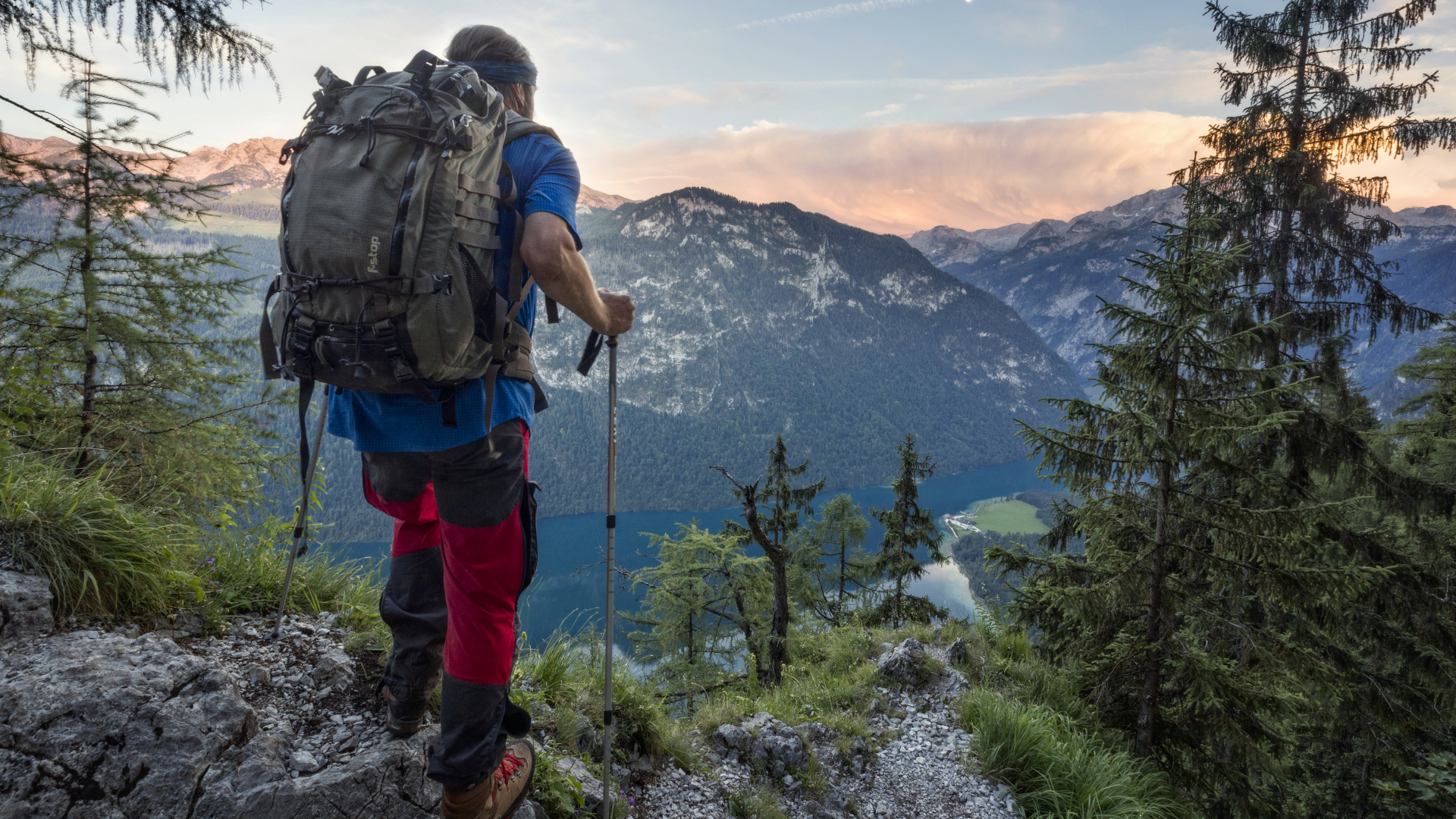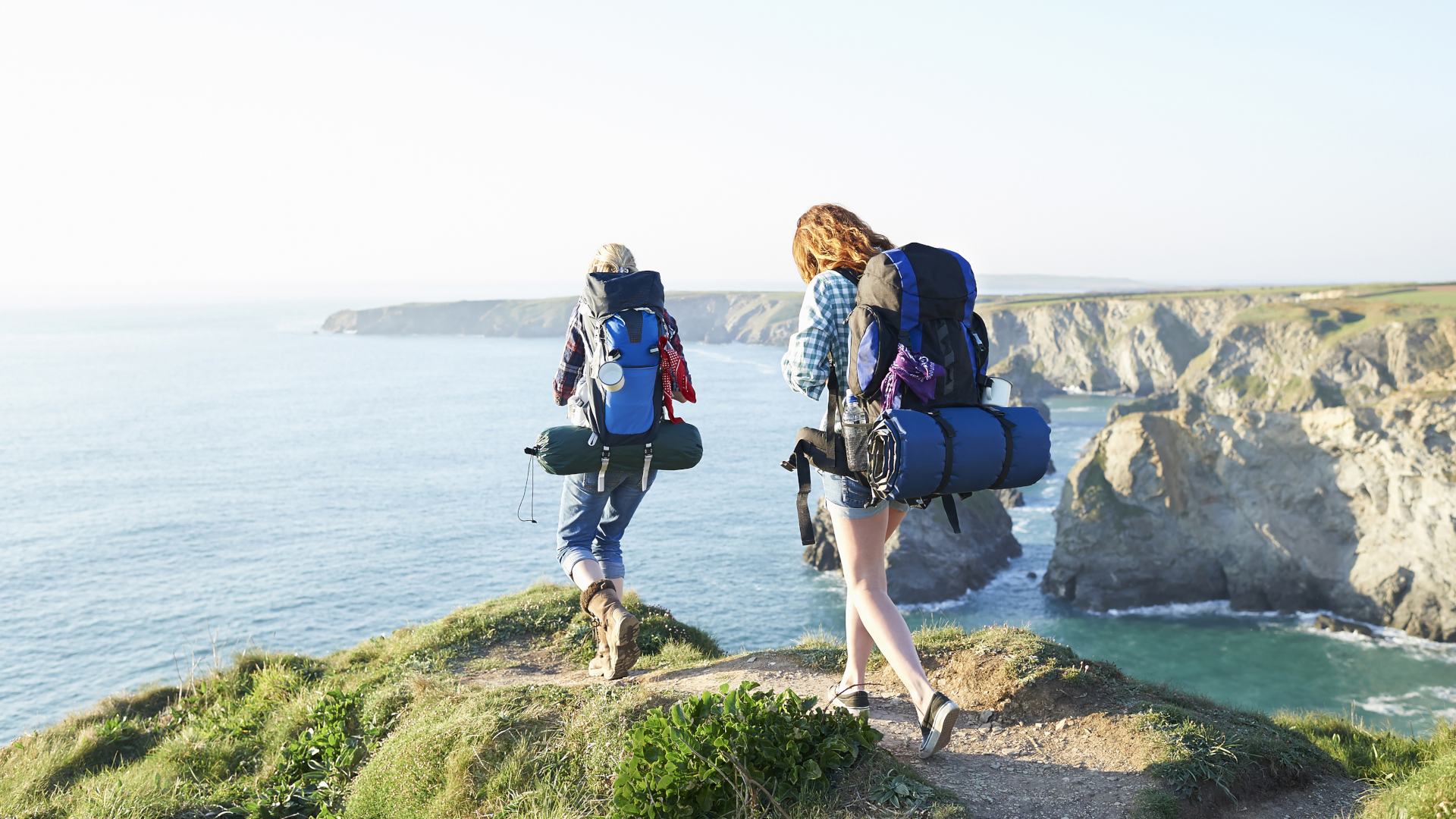How to hoist a backpack without hurting yourself
Learn how to hoist a backpack when you’re on a backpacking trip or thru-hike so you can hike injury-free

If you’re planning on embarking on some backpacking or thru-hiking adventures this year, you’ve probably put a ton of time and effort into preparing to carry that heavy load over many miles on the trail.
First, you have to choose the right size backpack, then once you’ve gathered together all your gear, you need to pack it properly so it’s balanced and you can find what you need without dumping the contents out on the trail every time you stop for lunch. Once you get to the trailhead, you need to adjust your backpack to make sure that you don’t end up with back pain when you finally start hiking.
So it’s a shame for all that effort to go to waste when you awkwardly swing your backpack up and throw your back/shoulder/neck out in the process. In this article, we talk you through how to hoist a backpack without hurting yourself, so you can spend more time on the trail and less time at the physical therapist’s office.

How not to hoist a backpack
Let’s start first with what not to do, and remember that a lot of this only applies to big, heavy packs filled with several days worth of gear. Of course, when you’re just tossing a daypack over your shoulder for a short hike, you can grab it by one of the shoulder straps and swing it on, no harm done to either the backpack or your body. But when we’re talking about a big, heavy backpack loaded up with your tent, sleeping bag and three days worth of food, you need to take a little more care. Grabbing it by the shoulder straps repeatedly can damage the fabric and seams of the straps over time, meaning you need to replace your expensive, thoughtful-chosen pack sooner, and it might not be great for your joints either.

How to hoist a backpack
To keep your backpack and your back in good shape, every time you put your backpack on, follow these steps:
- First, loosen the shoulder straps to make the backpack easier to get on.
- Stand behind your backpack, so the back panel is facing your thighs, with your feet wide and a good bend to your knees.
- Grab the backpack by the top handle – which is also known as the haul loop – and not the shoulder straps.
- Keep the back panel facing you and lift the backpack up to rest on one thigh – if you’re holding the haul loop with your right hand, it’s easiest to rest the backpack on your left thigh.
- Slide your free arm into the shoulder strap until it’s properly over your shoulder.
- Keeping your hand on the haul loop for now, lean forward slightly and use the other elbow to slide the backpack onto your back.
- Straighten up and slide your other arm through the shoulder strap.
- Adjust your backpack to transfer the majority of the weight onto your lower body, starting with the hip belt.
- Now you can set off down the trail!
- Best hiking shoes: lightweight footwear for tackling the trails
Advnture Newsletter
All the latest inspiration, tips and guides to help you plan your next Advnture!
Julia Clarke is a staff writer for Advnture.com and the author of the book Restorative Yoga for Beginners. She loves to explore mountains on foot, bike, skis and belay and then recover on the the yoga mat. Julia graduated with a degree in journalism in 2004 and spent eight years working as a radio presenter in Kansas City, Vermont, Boston and New York City before discovering the joys of the Rocky Mountains. She then detoured west to Colorado and enjoyed 11 years teaching yoga in Vail before returning to her hometown of Glasgow, Scotland in 2020 to focus on family and writing.

